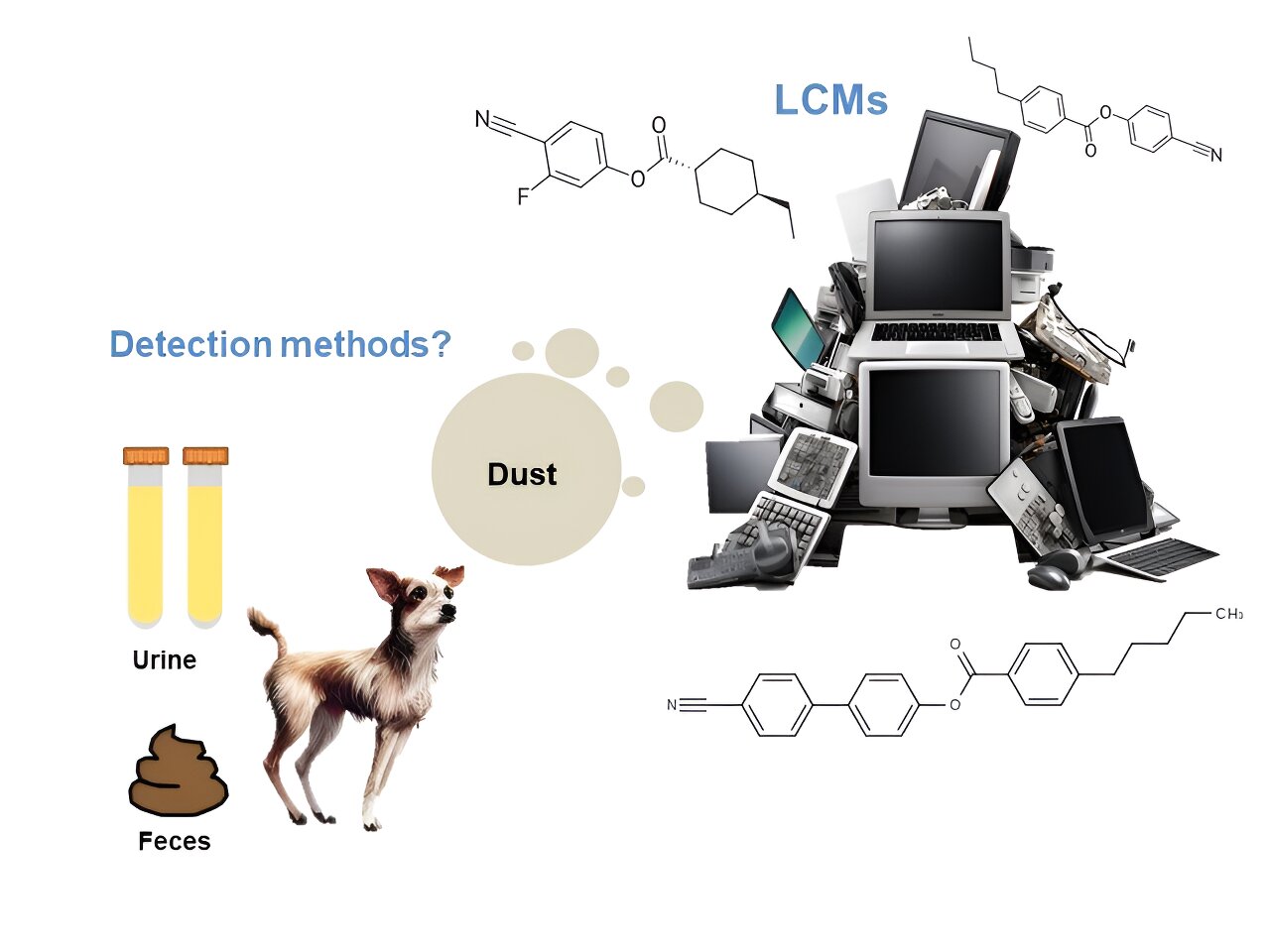by KeAi Communications Co.
Liquid crystal monomers (LCMs) are synthetic organic chemicals used in manufacturing liquid crystal displays (LCDs) present in numerous digital electronic devices. As the use of digital electronics, such as computers and smartphones, becomes increasingly prevalent, concerns over LCM exposure have risen to prominence as a public health issue. However, research into the occurrence of LCMs in human and environmental matrices remains limited.
In a study published in Environmental Chemistry and Ecotoxicology, a team of researchers from the Wadsworth Center, New York State Department of Health, and the Department of Environmental Health Sciences at SUNY Albany, developed an innovative technique to identify 60 different liquid crystal monomers (LCMs) in a variety of samples, including electronic waste, indoor dust, and even in dog feces and urine.
“Our approach, using gas chromatography–mass spectrometry (GC–MS), provides insight into the biological and environmental exposure to LCMs, chemicals frequently used in the production of liquid crystal displays,” explains Yuan Liu, the first author of the study. “Notably, we found the widespread presence of LCMs not only in electronic waste but also in dog feces and urine.” This is the first study to report the occurrence of LCMs in dog urine and feces.
The method’s performance was evaluated based on accuracy, precision, sensitivity, and feasibility. It demonstrated satisfactory levels of precision and accuracy, with limits of detection deemed suitable for the analysis of LCMs in both environmental and biological samples.
“The versatility of this method enables the comprehensive monitoring of these chemicals across a wide range of matrices, offering a more detailed depiction of potential exposure risks,” adds Kurunthachalam Kannan, senior and corresponding author of the study. “It enhances our understanding of the distribution of LCMs and introduces a novel approach to assess their impact on health and the environment.”
More information:
Yuan Liu et al, A method for the determination of 60 liquid crystal monomers in biotic and abiotic samples, Environmental Chemistry and Ecotoxicology (2024). DOI: 10.1016/j.enceco.2024.01.003
Provided by
KeAi Communications Co.
Citation:
Revealing environmental exposure to liquid crystal monomers from digital displays (2024, March 15)
retrieved 15 March 2024
from https://phys.org/news/2024-03-revealing-environmental-exposure-liquid-crystal.html
This document is subject to copyright. Apart from any fair dealing for the purpose of private study or research, no
part may be reproduced without the written permission. The content is provided for information purposes only.


